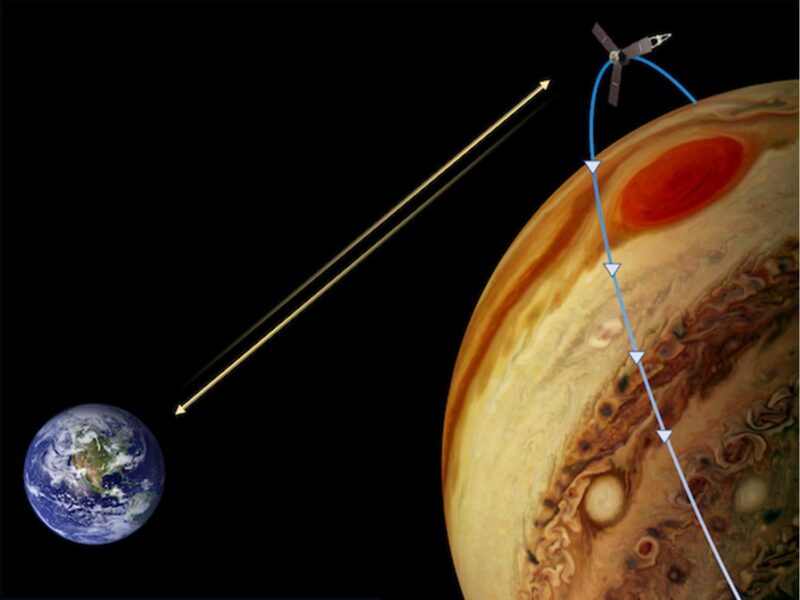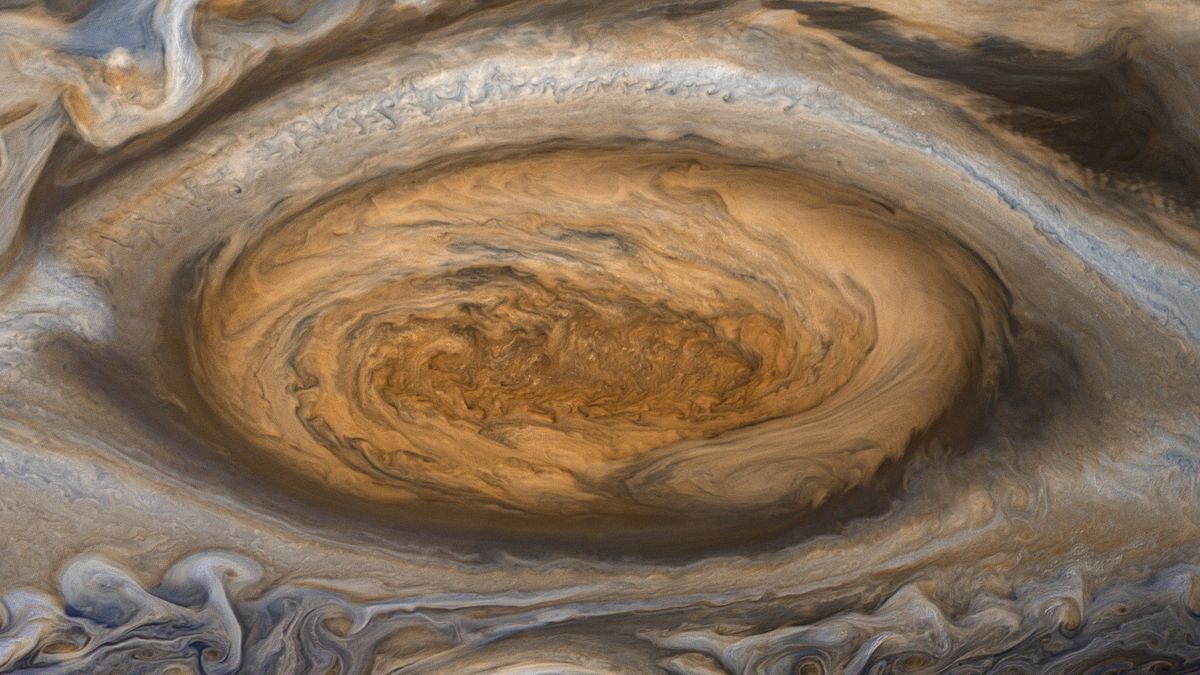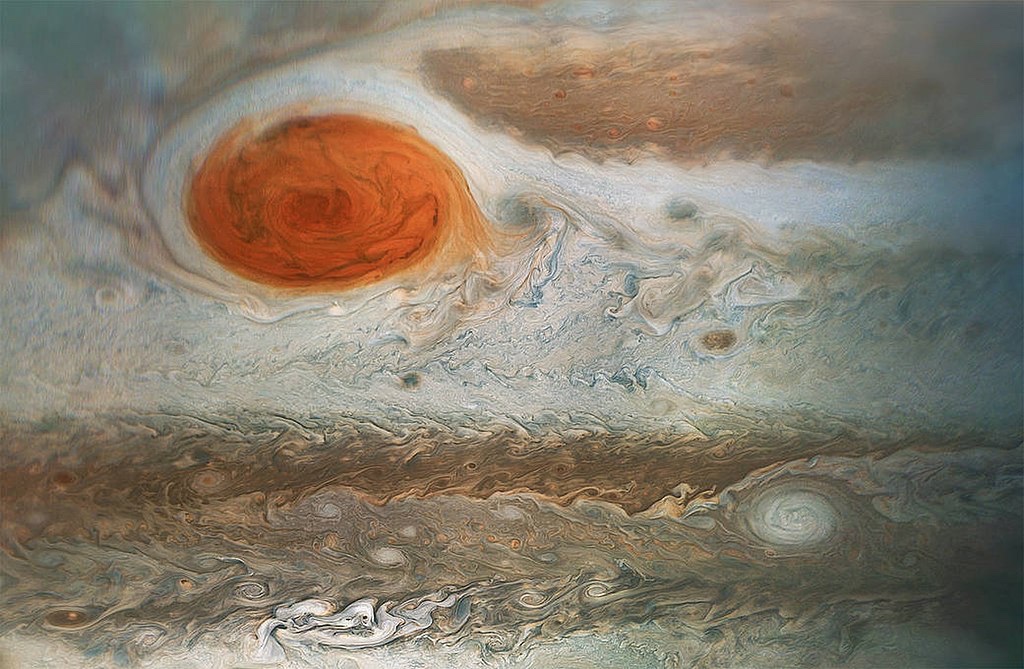Jupiter’s iconic Great Red Spot may extend even deeper into the planet’s atmosphere than scientists thought.
NASA’s Juno spacecraft zipped past the Great Red Spot — an anticyclone large enough to swallow Earth — twice in 2019. Measurements from those flights are now revealing the storm’s structure in far more detail than telescope images can show. That data suggests that the vortex probably extends anywhere from 186 to 310 miles deep (200 to 500 kilometers) — far below Jupiter’s clouds.
“The Great Red Spot is as deep within Jupiter as the International Space Station is high above our heads,” Marzia Parisi, a Juno scientist at NASA’s Jet Propulsion Laboratory, said in a press briefing on Thursday. “If we were standing in the eye of the cyclone, we would be immersed in it from the sea level to beyond the orbit of the ISS.”

The Juno probe has been circling Jupiter, flying past its poles and even some of its moons, for the past five years. Before its latest visits to the Great Red Spot, the spacecraft hadn’t flown past the giant storm since July 2017. Back then, Juno’s measurements indicated that the vortex extended about 200 miles into Jupiter’s atmosphere.
That was an astonishing depth to scientists at the time — it’s about 50 to 100 times deeper than Earth’s oceans. But now, Juno’s latest flybys have shown that the storm may extend much farther down than that.

“I think most of the scientific community, they were thinking that the Great Red Spot was very shallow,” Parisi said. “There were two schools of thought, of course, between people that thought it was going to stop in the first layers of the atmosphere and others that thought that maybe it will even go all the way down to the center of the planet.
“It was surprising, actually, to see it go so deep.”
Even so, the vortex’s height is nothing compared with its width: 10,000 miles across. That’s 1.3 times the width of Earth.
“It’s a pancake because it’s so wide at the top,” Scott Bolton, who leads the Juno team at Southwest Research Institute, San Antonio, said in the briefing. “But that pancake is much thicker than what we would have anticipated.”
The researchers published their findings in the journal Science on Thursday.
Something is stopping the Great Red Spot about 300 miles deep
Mysteriously, the jet streams surrounding the Great Red Spot extend even deeper — nearly 1,900 miles (about 3,000 km) below Jupiter’s cloud surface. The researchers aren’t sure why.
“Obviously, there is something at 500 kilometers that is limiting the circulation of the Great Red Spot,” Parisi said.
They do know that those jets — distinct bands of gas wrapping around the planet — are keeping the Great Red Spot alive. The storm is wedged between two jet streams that move in opposite directions, which power the spin of the vortex.
“Because we have these new measurements, at this point, it’s more kind of like reverse engineering,” Parisi said. “We know how deep the jet streams are and how deep the Great Red Spot is. So can theoreticians explain why there is such a difference in the depth of the jet streams and the Great Red Spot?”
The Great Red Spot is constantly changing. It has been shrinking and becoming more circular since astronomers began observing it about 150 years ago. Just last month, another group of scientists discovered that winds in the cyclone’s outer band had sped up over the past decade, while its inner regions had slowed. Measurements from NASA’s Hubble Space Telescope have indicated that the Great Red Spot is getting taller as it shrinks.

Some scientists have suggested the storm will collapse and disappear in just a few decades because of its shrinking size, but other researchers disagree.
For its part, Juno is set to continue orbiting and studying Jupiter for another four years.
